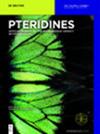Correlation between methylene tetrahydrofolate reductase (MTHFR) gene rs1801133 C>T polymorphisms and risk of osteoporosis
IF 0.9
4区 医学
Q4 BIOCHEMISTRY & MOLECULAR BIOLOGY
引用次数: 0
Abstract
Abstract Objective To evaluate the correlation between methylene tetrahydrofolate reductase (MTHFR) gene rs1801133 C>T polymorphisms and risk of osteoporosis. Methods We searched the clinical studies related to MTHFR gene rs1801133 C>T polymorphisms and risk of osteoporosis in the electronic databases of PubMed, Web of Science, EMBASE, China National Knowledge Infrastructure (CNKI), Chinese BioMedical Literature Database (CBM) and included the suitable publications in the present meta-analysis according to the inclusion and exclusion criteria. The data of included studies were extracted and pooled by a random or fixed-effect model. The odds ratio (OR) and 95% confidence interval (95% CI) were applied to demonstrate the correlation between MTHFR gene rs1801133 C>T polymorphisms and the risk of osteoporosis. Publication bias was assessed by Begg’s funnel plot and Egger’s line regression test. Results Seven case–control clinical studies were included and a data combination was made. The data was pooled by the fixed effect model because of no obvious statistical heterogeneity. The pooled results indicated that people with the T allele had increased risk of developing osteoporosis under the homologous gene model (TT vs CC) (OR = 2.36, 95% CI: 1.81–3.08, p < 0.05), dominant gene model (TT + CT) vs CC (OR = 1.47, 95% CI: 1.21–1.77, p < 0.05) and recessive gene model TT vs (CC + CT) (OR = 2.16, 95% CI: 1.71–2.74, p < 0.05). Egger’s line regression test indicated no significant publication bias for the present meta-analysis in the above homologous, dominant, and recessive gene models. Conclusion The MTHFR gene rs1801133 C>T polymorphisms are associated with osteoporosis and subjects with the T allele have an increased risk of developing osteoporosis.亚甲基四氢叶酸还原酶基因rs1801133 C>T多态性与骨质疏松症风险的相关性
【摘要】目的探讨亚甲基四氢叶酸还原酶(MTHFR)基因rs1801133 C >t多态性与骨质疏松风险的相关性。方法在PubMed、Web of Science、EMBASE、中国知网(CNKI)、中国生物医学文献数据库(CBM)等电子数据库中检索MTHFR基因rs1801133 C bbbbt多态性与骨质疏松风险相关的临床研究,并根据纳入和排除标准将合适的文献纳入本meta分析。纳入研究的数据通过随机或固定效应模型提取和汇总。应用比值比(OR)和95%置信区间(95% CI)验证MTHFR基因rs1801133 C >t多态性与骨质疏松风险的相关性。采用Begg’s漏斗图和Egger’s直线回归检验评价发表偏倚。结果纳入7项病例对照临床研究,并进行资料组合。由于没有明显的统计异质性,数据采用固定效应模型进行合并。结果表明,同源基因模型(TT vs CC)、显性基因模型(TT + CT) vs CC (OR = 1.47, 95% CI: 1.21-1.77, p < 0.05)、隐性基因模型(TT vs CC + CT) (OR = 2.16, 95% CI: 1.71-2.74, p < 0.05)下携带T等位基因的人发生骨质疏松的风险增加。Egger 's线回归检验表明,在上述同源、显性和隐性基因模型中,本meta分析没有显著的发表偏倚。结论MTHFR基因rs1801133 C b> T多态性与骨质疏松症相关,携带该T等位基因的受试者骨质疏松症发生风险增加。
本文章由计算机程序翻译,如有差异,请以英文原文为准。
求助全文
约1分钟内获得全文
求助全文
来源期刊

Pteridines
生物-生化与分子生物学
CiteScore
1.20
自引率
25.00%
发文量
6
审稿时长
>12 weeks
期刊介绍:
Pteridines is an open acess international quarterly journal dealing with all aspects of pteridine research. Pteridines are heterocyclic fused ring compounds involved in a wide range of biological functions from the color on butterfly wings to cofactors in enzyme catalysis to essential vitamins. Of the pteridines, 5,6,7,8-tetrahydrobiopterin is the necessary cofactor of several aromatic amino acid monoxygenases, the nitric oxide synthases and glyceryl ether monoxygenase (GEMO). Neopterin plays an essential role in the immune system and is an important biomarker in laboratory medicine for diseases such as HIV, cardiovascular disease, malignant tumors, among others.
Topics:
-Neopterin, dihydroneopterin, monapterin-
Biopterin, tetrahydrobiopterin-
Folates, antifolates, riboflavin-
Phenylalanine, tyrosine, phenylketonuria, serotonin, adrenalin, noradrenalin, L-DOPA, dopamine, related biogenic amines-
Phenylalanine hydroxylase, tyrosine hydroxylase, tryptophan hydroxylase, nitric oxide synthases (iNOS), alkylglycerol monooxygenase (AGMO), dihydropterin reductase, sepiapterin reductase-
Homocysteine, mediators of inflammation, redox systems, iron.
 求助内容:
求助内容: 应助结果提醒方式:
应助结果提醒方式:


